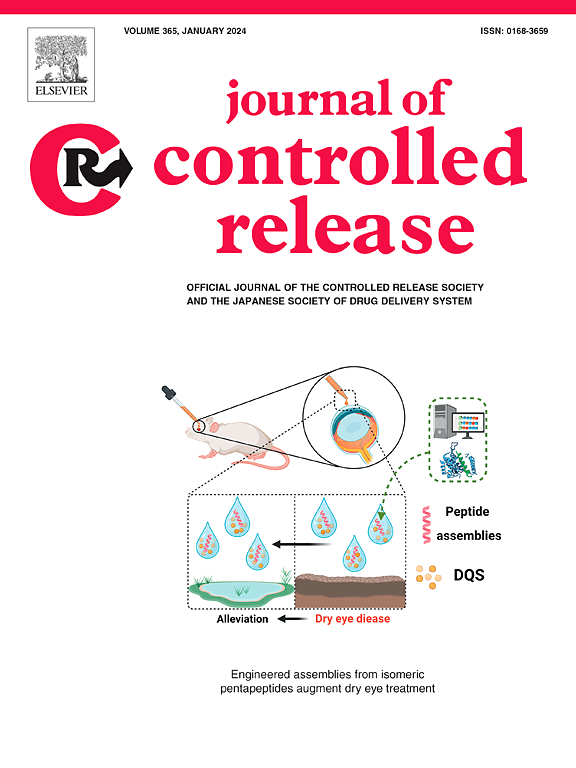Cotadutide reversible self-assembly based long-acting injectable depot for sustained delivery of GLP-1 glucagon receptor agonists with controlled burst release
IF 10.5
1区 医学
Q1 CHEMISTRY, MULTIDISCIPLINARY
引用次数: 0
Abstract
Cotadutide (Cota) is a lipidated dual GLP-1 and Glucagon receptor agonist that was investigated for the treatment of various metabolic diseases, it is designed for once daily subcutaneous (SC) administration. Invasive daily injections can result in poor patient compliance with chronic disease, and here, we demonstrate an innovative strategy of encapsulating reversible cota self-assembled fibers within an in-situ forming depot of low molecular weight poly(lactic-co-glycolic) acid (LWPLGA) for sustained delivery GLP-1 and Glucagon receptor agonist with controlled burst release. This could be a suitable alternative to other sustained delivery strategies for fibrillating peptides. We investigated a range of cationic ions (Na+, Ca2+, Zn2+) and studied their influence on the secondary structure, morphology and the monomer release profile of cota fibers. Fibers forming hierarchy structures such as twisted filament and ribbons with beta sheet secondary structure resulted in better controlled burst. The subcutaneous administration of Ca2+ fiber/LWPLGA depot formulation in rats resulted in 60-fold reduction in maximum concentration (Cmax) compared with cota immediate release (IR) SC formulation and a prolonged plasma exposure over a month with plasma half-life extended from the 10 h observed with the cota daily formulation to 100 h. This extended-release formulation also maintains smaller peak and trough fluctuation within therapeutic window, and PK modelling of repeated dose indicates this formulation could enable a possible dose frequency of 14 days in rat with assumed therapeutic concentration (ratios of the maximum concentration and the trough concentration) Cmax/Ctrough window. This new long-acting injectable (LAI) method could open the door to transforming short-life peptides with sub-optimal half-life into candidates for weekly or even monthly dosing regimens, potentially leading to novel drug products with increased patient comfort.

求助全文
约1分钟内获得全文
求助全文
来源期刊

Journal of Controlled Release
医学-化学综合
CiteScore
18.50
自引率
5.60%
发文量
700
审稿时长
39 days
期刊介绍:
The Journal of Controlled Release (JCR) proudly serves as the Official Journal of the Controlled Release Society and the Japan Society of Drug Delivery System.
Dedicated to the broad field of delivery science and technology, JCR publishes high-quality research articles covering drug delivery systems and all facets of formulations. This includes the physicochemical and biological properties of drugs, design and characterization of dosage forms, release mechanisms, in vivo testing, and formulation research and development across pharmaceutical, diagnostic, agricultural, environmental, cosmetic, and food industries.
Priority is given to manuscripts that contribute to the fundamental understanding of principles or demonstrate the advantages of novel technologies in terms of safety and efficacy over current clinical standards. JCR strives to be a leading platform for advancements in delivery science and technology.
 求助内容:
求助内容: 应助结果提醒方式:
应助结果提醒方式:


